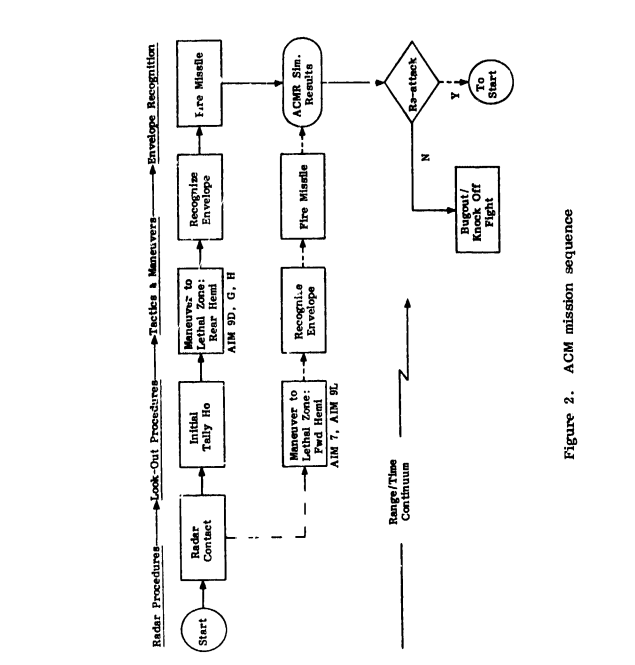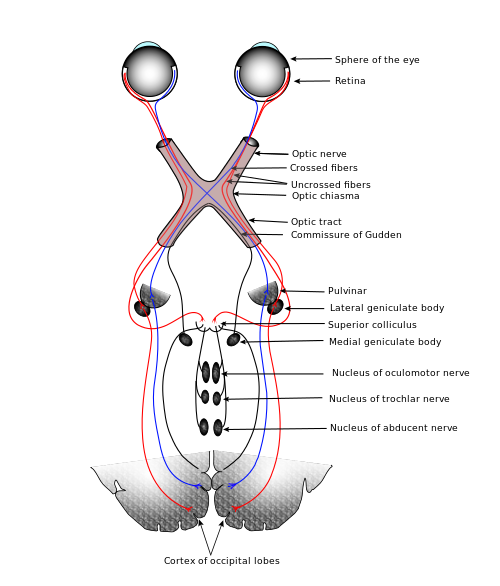UD commenter, ayearningforpublius [AYP], has his own blog where he has many interesting posts informed by a lifetime of varied experiences. He is also an advocate for the idea that nature shows compelling observable signs of design, and in “dialog with folks at and surrounding the National Center for Science Education (NCSE)” has encountered a typical challenge, which he noted on in a March 27, 2014 comment in a current OOL thread, i.e.:
“Mac: Wrong question, since as a YECist IDiot you cannot conceive of undesigned systems like all life forms have proven to be to the point where evolution is a scientifically acknowledged fact. Show me just one life form that was designed top down, with the evidence, process & theory to explain the outcome?”
Of course, those of us with experience of making designs know by that experience that as a rule:
a: a functional design based on interacting parts exhibits a purpose and
b: requires a coherent, organised and information-rich process logic (often visualised using flowcharts and/or block diagrams) that
c: moves from initial states and inputs through activities to yield outputs and a targetted end state, which
d: requires detailed bottom-up technical steps and interactions between components and parts that
e: are required for and exist in the context of the top-down process logic and purpose.
So, it is no surprise at all to see that both top-down and bottom-up approaches are necessary for a successful design.
In his comment, AYP requested “I would like to offer up my essay to this community for further comment.”
Without further ado, let us clip (for what now has to be categorised as one of UD’s guest posts):
_______________________
>> The Challenge of Design in Nature
Mac: Wrong question, since as a YECist IDiot you cannot conceive of undesigned systems like all life forms have proven to be to the point where evolution is a scientifically acknowledged fact. Show me just one life form that was designed top down, with the evidence, process & theory to explain the outcome?
The challenge presented above is typical of that presented to those of us who hold to a position of the Intelligent Design of things that have an “appearance” of design in nature – the mammalian eye is an example.
So let me step up to that challenge in a way that correlates such supposed “illusions” of design to design we can all agree is “real” no kidding undisputed design . . . namely all of the created artifacts of human endeavor from the pyramids of old to modern electronic devices.
I will take the eye as my example of a “design” from nature, and from my own hands-on experience in the systems and software development field, I will follow the design and implementation of a data link system as part of a larger Tactical Aircrew Combat Training System (TACTS).
{Let’s insert as Fig. A, a clip from a description manual for this system, which has a familiar looking name among the authors, which illustrates process logic using a flowchart:}

The particular piece of TACTS I will focus on is the data link interface between the downlinked aircraft data and the computer systems on the ground that take that real-time aircraft data and produce visual images that are used for real-time live monitoring of missions as well as post mission aircrew debrief.
As a designer and developer of the interface, one must first of all obtain an understanding of the nature and detailed characteristics of the incoming data. This includes research in the procurement of a device that is capable of electrically interfacing with the incoming data stream, capturing it and passing it on to downstream software processes and algorithms that will produce the final visual product.
Once that proper hardware interface device is installed into the host computer system, the interface software must be conceived, designed, written and debugged to successfully capture the data incoming data packets.
As an aside here, note here that I am focusing on the tasks of software interfacing with the data. The hardware aspect of this interface must accommodate such physical things such as frequency band tuning and antenna characteristics such as polarization, bit clocking rates, error detection and correction and more.
The interface software is presented with a continual stream of data, in the form of bits (0 or 1) and bytes (8 bits). A fair amount of this data is noise having nothing to do with the business of tracking high speed maneuvering jets, but some of it actually describes this maneuvering in a great deal of detail. The task of the interfacing software is to pick out this specified data from the non-specified noise and pass the maneuver data to the “brains” of the TACTS system for transformation into visual images, and storage for later debrief as well as passing the processed data to remote debriefing sites.
In some of the tasks I describe I have actually been the designing, programming, and debugging agent transforming this data stream into human useable forms. But I have not been the sole such agent as many other design and manufacturing entities are necessarily involved in such a complex endeavor. Also note, as in this article, that I as the agent am for the most part anonymous and unknown as are the other participants . . . but I and the other intelligent agents (designers) can be found if one searches for our identities. But knowing who I am specifically is unnecessary in the context of understanding that what I have described and left behind in some software somewhere is an Intelligently Designed (sub)system.
Now lets return to the challenge:
Show me just one life form that was designed top down, with the evidence, process & theory to explain the outcome?
The life form I choose to highlight is the Human life form, and a particular subsystem of that life form, the visual subsystem.
{As Fig. B: HT Gray’s Anatomy & Wikipedia, the human visual system, which invites comparison with the above flowchart:}

And what I will attempt to illustrate is not the design and development of a material thing . . . the eye, but rather a functional thing . . . the visual experience which necessarily includes the material thing, and thus the material thing becomes part and parcel an artifact of the functional thing.
As in the case of TACTS, the end product is not the individual material parts, or even the material whole . . . but rather the functional end product of a debrief product in the case of TACTS, and any number of functional end products of the human visual experience such as the double play in baseball, a great painting such as one by Vermeer, a great musical/theatrical experience such as Les Miserables or Handel’s Messiah . . . or the Osprey’s dive from high altitude to catch an unawares fish.
As in the case of the TACTS data link interface, the designer of the eye must have extensive and detailed knowledge and understanding of that which it is interfacing with –of the physical characteristics of the electro-magnetic spectrum and the particular frequency band in which to interface with. At the very detailed and smallest unit of interface with this spectrum, I understand that the eye is capable of detecting individual photons. Now I don’t claim to understand photons, but suffice it to say that if this is true, then the designers knowledge of the requirements of the eye are detailed and immense . . . and necessary.
So the designer of the eye accounts for the vastness of the electro-magnetic spectrum (EMS) and designs the eye such that its subsystems (the retina) are able to differentiate and isolate the portions of the spectrum of interest for the targeted life form (human, eagle, shark . . . ) so those various life forms can perform the functions necessary for its day to day, minute by minute life.
But that fundamental EMS interface is not the end-all of the visual experience. The captured data must be processed and re-formatted for downstream use – in the case of TACTS for monitor and debrief, and passing processed data to remote locations . . . for the animal the captured data is packaged for transmission to the brain via optics nerves. An interesting parallel between the naturally designed visual systems and the human designed systems such as TACTS, is the aspect of data compression, engineers have long recognized that data streams often contains gaps and repeated patterns that can be compressed, thus increasing the available bandwidth (capacity) of the transmitting media. Likewise, it appears that researchers are discovering a sort of data compression taking place in the eye prior to the data being passed to the optic nerves and then transmitted to the brain. Read this fascinating article Image Processing in the Eye: Like “Magic”
So as in the case of the TACTS, the designers must be constantly aware of the downstream requirements of the data being processed at the interface level, the designers must also keep foremost in mind, the intended functional use of the data as it flows through the system (the life form). That functional use is as diverse as is the human experience.
The idea of Intelligent Design very nicely parallels the human generated designs we all experience on a regular basis. Naturalistic explanations such as Darwinian Evolution of necessity struggle with presenting a convincing argument, let alone evidence, for the development of a complex life form such as our own human body – in spite of the claim of fact and mountains of evidence.
* * * *
What I have hoped to accomplish is to describe in broad terms a response to the challenge presented:
Show me just one life form that was designed top down, with the evidence, process & theory to explain the outcome?
and because I was actually there and participated in the design, development and deployment of a human designed system, I am able to present it as a reasonable analog to a similar naturally developed system. However, I was not there to witness or participate in the design, development and deployment of a naturally designed system, but I believe I have adequately outlined reasonable analogies and responses to the challenge:
- the evidence — the eye itself
- the process – a commonly accepted design methodology prevalent in the engineering world.
- process – stating requirements >> understanding requirements >> designing to requirements >> building to requirements >> testing to requirements >> successful use by end users.
- theory – accepted design, engineering and manufacturing methodologies taught in most university engineering degree curricula.
- who is the designer – not explicitly stated in the challenge, but I believe I have made the argument that the identity of a designer is tangential to the argument of design. Should one seek out such an identity is an individual choice and one I hope individuals would do so.
I would welcome corrections, additions and further insights to my response to Mac’s challenge. Civility is always welcome.>>
_______________________
So, now, what do we think? END
PS: It’s budget speech week here and so many of us budgies have been busily cheeping away. If I missed a link to Petrushka’s claimed earlier response to the essay challenge do understand why; and note that I have had no notification in my inbox, and of course the spam box will be on offers for regrowing hair or helping widows of bank vice presidents as usual.